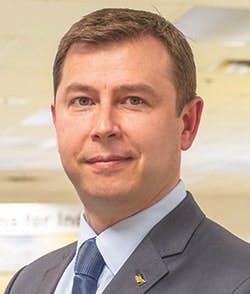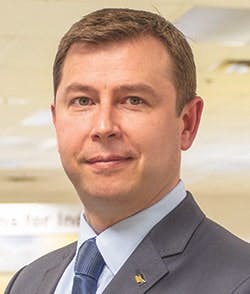How to build new worker interest in industry
Dean Steadman is CNC Education Program Manager for FANUC. In a podcast conversation earlier this year with Plant Services Editor In Chief Thomas Wilk and Control Digital Editor Amanda Del Buono, Steadman shared how the company built a CNC training program with high schools and colleges around the United States that helps manufacturers to more easily find the trained CNC machinists that they need. The program is centered on core processes, principles, and interaction with real industrial equipment.
PS: What are some of your goals with the CNC training program? What are you hoping that your students will take away from it?
DS: We want students to take away an understanding of programming and operation of CNC machines to gain more knowledge in the manufacturing process. We want to make them job-ready, and dispel the myth that manufacturing isn’t a great industry to be in. Industry these days is very high tech, very fast moving, but the students don’t fully realize that.
Most of the time when we talk to students about what they know about manufacturing, their image is of an early 1900s Ford assembly line where everything is the three D’s: dirty, dark, and dangerous. The reality is it’s much cooler, it’s high tech and with high value equipment being used.
We want them to be competent in not only in using that equipment, but because the technology is moving along fast, we want them to use it in the correct way as well. How we program and operate machines is different to what it was 15, 20 years ago.
PS: We have observed that the maintenance and reliability field is drawing new workers from non-traditional fields, for example from mechatronics, control system design, CNC, or robotics, and then they realized that this might be one small piece of a larger puzzle. Are you seeing this too?
DS: Yeah. We’re one piece of the puzzle as well. We try and keep a handle on what’s actually going on in the industry, what type of equipment and processes they’re using to try and relay that back to the schools.
Primarily, we target high school and community college for associates degrees and things, so we can add our content and our equipment and services to programs that already exist for engineering or for mold-making and things like that, different courses that they already run. But we do try and reach a bit further down to middle school. I think you’ve got to sort of capture their imagination when they’re a bit younger. We’re not trying to teach specific concepts at that point. We’re just showing them the types of industries that are out there and how cool it can be.
This article is part of our monthly Big Picture Interview column. Read more interviews from our monthly Big Picture series.
Beyond the community college, we do a little bit with some universities, and then outside of academia, we do work with veteran retraining groups, incumbent workers, and formerly incarcerated people as well.
PS: What kind of feedback are you getting from your partners, those manufacturers that you work with who are taking in your students? What are they saying as far as their abilities?
DS: For the most part, a lot of them are still struggling to find people. There’s only so much we can do as one company; it’s a collective effort. But in certain areas where we’ve been very active, in states like Ohio, we have a lot of large automotive companies like Honda there that have seen a big influx. We’re looking at almost 100% job placement for people coming out of the course. It’s made a great impact in those areas, but it’s still just what we can do is still a very small part of the overall picture.
Our installed base across the country is quite diverse. There are certain states where it’s more agricultural and not so much industrial, but where we see the most activity as far as schools go tends to follow the installed base as well. It’s mostly around the automotive sector, both the rust belt (Wisconsin, Illinois, Indiana, Michigan, Ohio) and also down in the south as well, where we have a lot of foreign automotive and aerospace industry, in states like Alabama, Georgia, and the Carolinas.
Texas is very big as well. We have a lot of schools using the program in Texas and over on the west coast in California and in Washington, places like that. So yeah, it’s nationwide, including Alaska and Hawaii.

